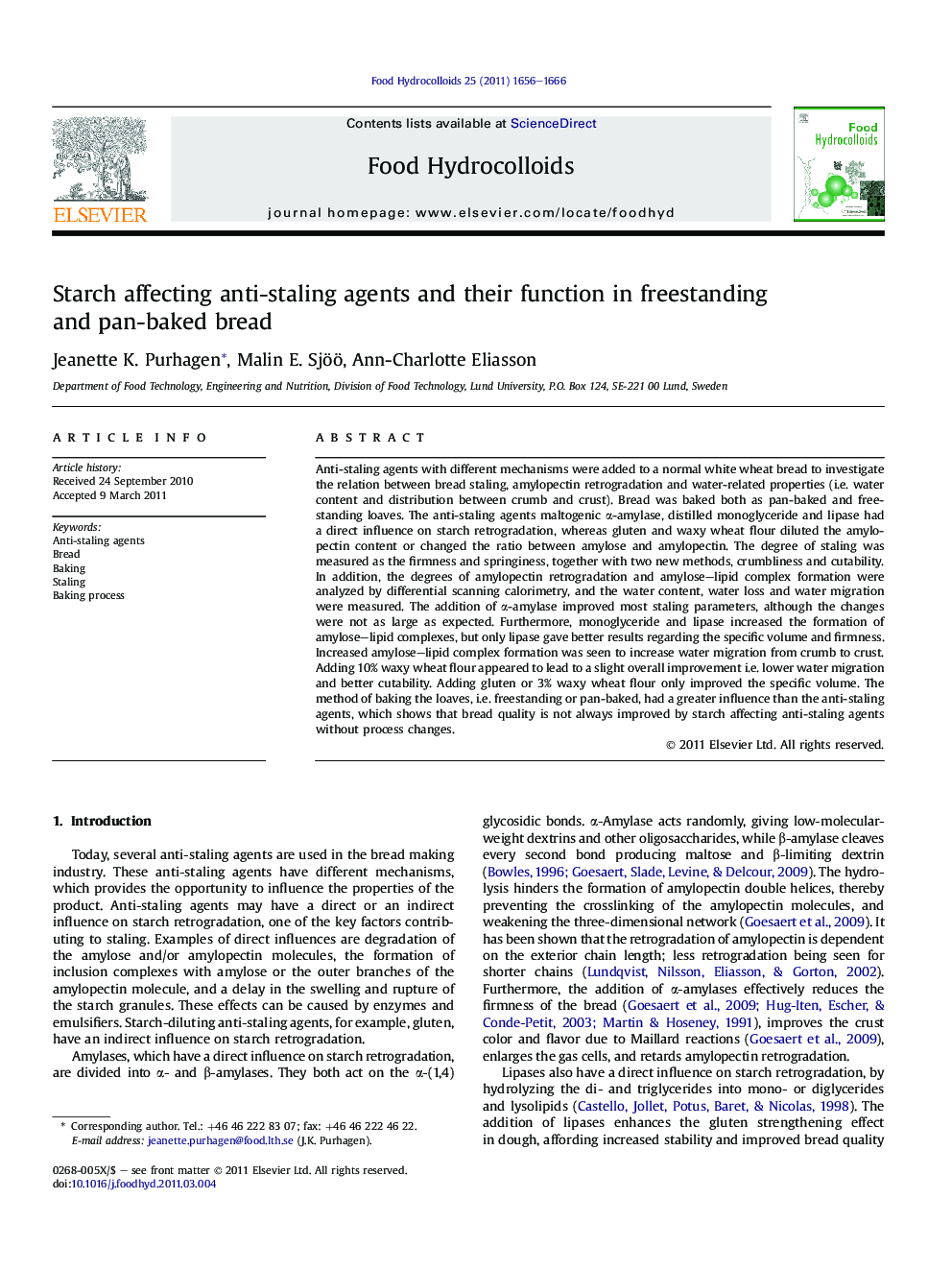| Article ID | Journal | Published Year | Pages | File Type |
|---|---|---|---|---|
| 605079 | Food Hydrocolloids | 2011 | 11 Pages |
Anti-staling agents with different mechanisms were added to a normal white wheat bread to investigate the relation between bread staling, amylopectin retrogradation and water-related properties (i.e. water content and distribution between crumb and crust). Bread was baked both as pan-baked and freestanding loaves. The anti-staling agents maltogenic α-amylase, distilled monoglyceride and lipase had a direct influence on starch retrogradation, whereas gluten and waxy wheat flour diluted the amylopectin content or changed the ratio between amylose and amylopectin. The degree of staling was measured as the firmness and springiness, together with two new methods, crumbliness and cutability. In addition, the degrees of amylopectin retrogradation and amylose–lipid complex formation were analyzed by differential scanning calorimetry, and the water content, water loss and water migration were measured. The addition of α-amylase improved most staling parameters, although the changes were not as large as expected. Furthermore, monoglyceride and lipase increased the formation of amylose–lipid complexes, but only lipase gave better results regarding the specific volume and firmness. Increased amylose–lipid complex formation was seen to increase water migration from crumb to crust. Adding 10% waxy wheat flour appeared to lead to a slight overall improvement i.e. lower water migration and better cutability. Adding gluten or 3% waxy wheat flour only improved the specific volume. The method of baking the loaves, i.e. freestanding or pan-baked, had a greater influence than the anti-staling agents, which shows that bread quality is not always improved by starch affecting anti-staling agents without process changes.
Graphical abstractFigure optionsDownload full-size imageDownload as PowerPoint slide
